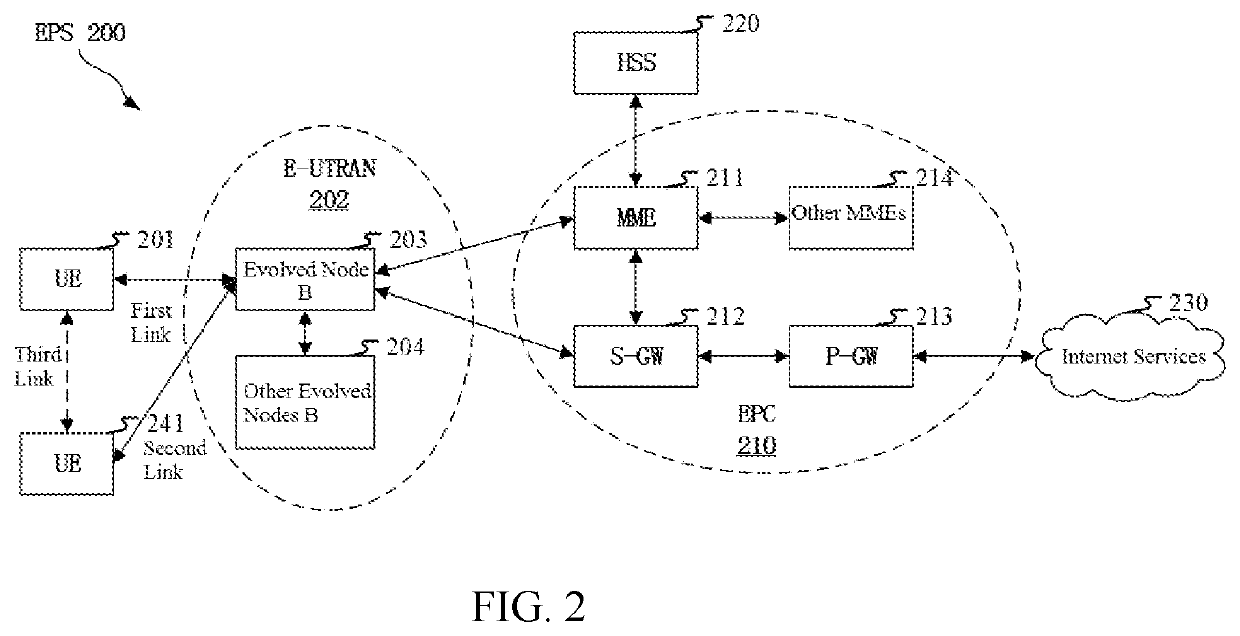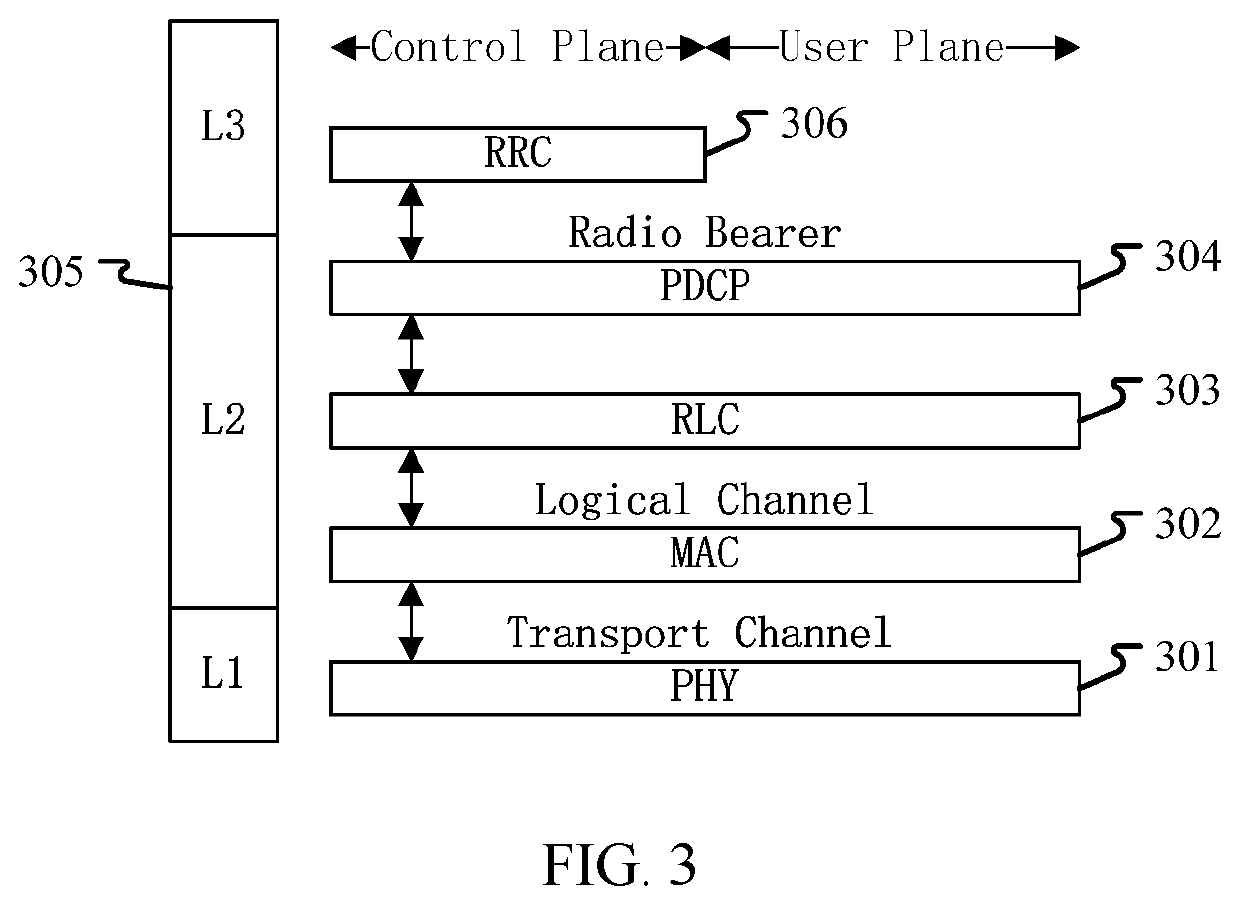Method and device in UE and base station used for dynamic scheduling
a dynamic scheduling and transmission method technology, applied in the direction of signal allocation, digital transmission, transmission path sub-channel allocation, etc., can solve the problem that the design requirement of nr cannot be met by the interleaver design of the pdcch in lte, and achieve the effect of reducing the probability of blocking, maximizing the frequency diversity gain, and uniform distribution of frequency domain resources
- Summary
- Abstract
- Description
- Claims
- Application Information
AI Technical Summary
Benefits of technology
Problems solved by technology
Method used
Image
Examples
embodiment 1
[0081]Embodiment 1 illustrates an example of a flowchart of the transmission of first information and a first signaling according to one embodiment of the present disclosure, as shown in FIG. 1. In FIG. 1, each box represents one step. In Embodiment 1, the UE in the present disclosure first receives first information and then monitors a first signaling in M RE sets, wherein the first information is used for determining the M RE sets, a monitor of the first signaling assumes that P modulation symbol groups are one-to-one mapped to P RE sets, the P RE sets are P RE sets of the M RE sets, and one blind detection for the first signaling is performed on the P RE sets; modulation symbols obtained by modulating the bits in a first bit sequence constitute a first modulation symbol set sequentially, wherein the bits in the first bit sequence are sequentially arranged according to an output of a channel encoder; the first modulation symbol set is divided into the P modulation symbol groups su...
embodiment 2
[0121]Embodiment 2 illustrates an example of a diagram of a network architecture according to the present disclosure, as shown in FIG. 2. FIG. 2 is a diagram illustrating a system network architecture 200 of NR 5G, Long-Term Evolution (LTE), Long-Term Evolution Advanced (LTE-A). The NR 5G or LTE network architecture 200 may be called an Evolved Packet System (EPS) 200. The EPS 200 may include one or more UEs 201, an NG-RAN 202, an Evolved Packet Core / 5G-Core Network (EPC / 5G-CN) 210, a Home Subscriber Server (HSS) 220 and an Internet Service 230. Herein, the EPS may be interconnected with other access networks. For simple description, the entities / interfaces are not shown. As shown in FIG. 2, the EPS provides packet switching services. Those skilled in the art are easy to understand that various concepts presented throughout the present disclosure can be extended to networks providing circuit switching services or other cellular networks. The NG-RAN includes an NR node B (gNB) 203 an...
embodiment 3
[0127]Embodiment 3 is a diagram illustrating an embodiment of a radio protocol architecture of a user plane and a control plane according to the present disclosure, as shown in FIG. 3. FIG. 3 is a diagram illustrating an embodiment of a radio protocol architecture of a user plane and a control plane. In FIG. 3, the radio protocol architecture of a UE and a gNB is represented by three layers, which are a layer 1, a layer 2 and a layer 3 respectively. The layer 1 (L1) 301 is the lowest layer and performs signal processing functions of each PHY layer. The layer 1 is called PHY 301 in this paper. The layer 2 (L2) 305 is above the PHY 301, and is in charge of the link between the UE and the gNB via the PHY 301. In the user plane, the L2 305 includes a Medium Access Control (MAC) sublayer 302, a Radio Link Control (RLC) sublayer 303, and a Packet Data Convergence Protocol (PDCP) sublayer 304. All the three sublayers terminate at the gNB of the network side. Although not described in FIG. ...
PUM
 Login to View More
Login to View More Abstract
Description
Claims
Application Information
 Login to View More
Login to View More - R&D
- Intellectual Property
- Life Sciences
- Materials
- Tech Scout
- Unparalleled Data Quality
- Higher Quality Content
- 60% Fewer Hallucinations
Browse by: Latest US Patents, China's latest patents, Technical Efficacy Thesaurus, Application Domain, Technology Topic, Popular Technical Reports.
© 2025 PatSnap. All rights reserved.Legal|Privacy policy|Modern Slavery Act Transparency Statement|Sitemap|About US| Contact US: help@patsnap.com



